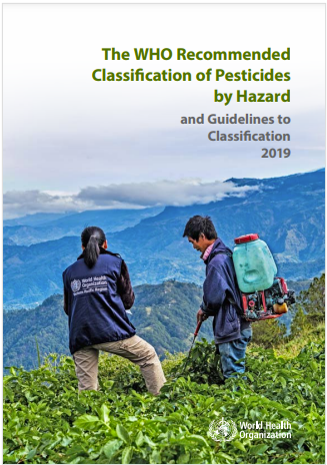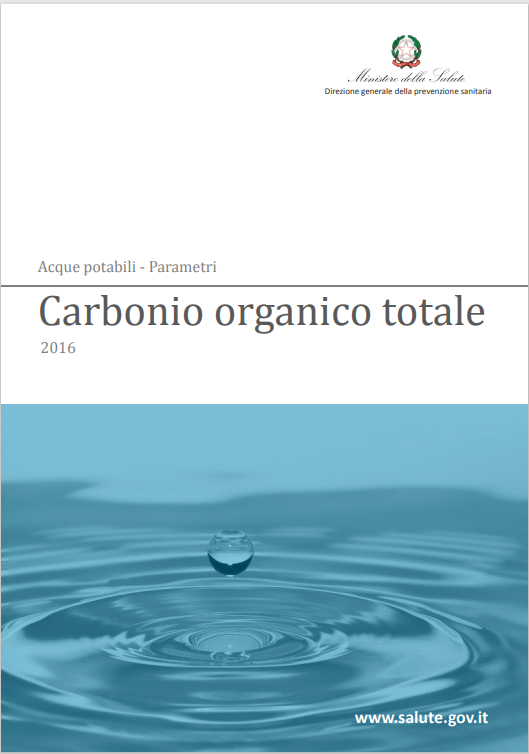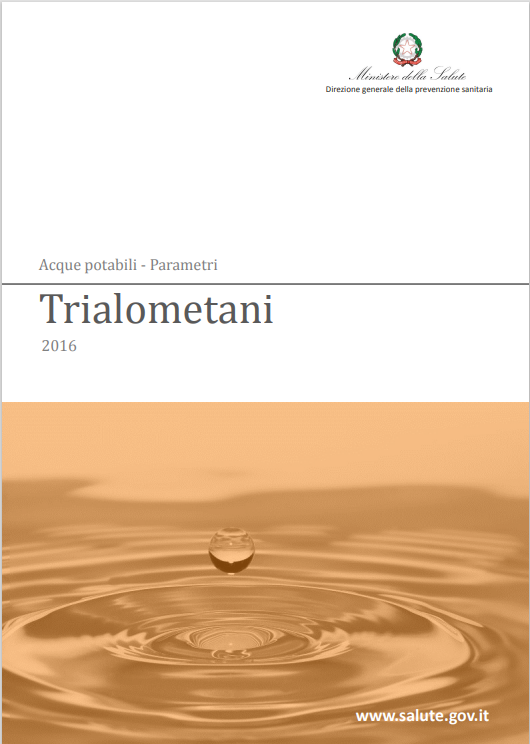
The WHO Recommended Classication of Pesticides by Hazard and Guidelines to Classication 2019
ID 18038 | 10.11.2022 / In allegato
The WHO Recommended Classification of Pesticides by Hazard was approved by the 28th World Health Assembly in 1975 and has since gained wide acceptance.
When it was published in the WHO Chronicle, 29, 397-401 (1975), an annex, which was not part of the Classification, illustrated its use by listing examples of classification of some pesticidal active ingredients and their formulations. Later suggestions were made by Member States and pesticide registration authorities that further guidance should be given on the classification of individual pesticides. Guidelines were first issued in 1978, and have since been revised and reissued every few years.
Up until 2009 the original guidelines approved by the World Health Assembly in 1975 were followed without amendment. The 2009 version of the guidelines introduced revised criteria for classification for the WHO Hazard Classes to take into account “The Globally Harmonized System of Classification and Labelling of Chemicals” (GHS).
The GHS was published with the intent to provide a globally-harmonized system to address classification of chemicals, labels, and safety data sheets. The GHS (with subsequent revisions) is now being widely used for the classification and labelling of chemicals worldwide. The information provided in this publication can be used to support efforts to manage pesticides appropriately, in line with the WHO/FAO International Code of Conduct on Pesticide Management.
In particular, this publication can be used to define “highly hazardous pesticides” using the criteria developed by the Joint FAO/WHO Meeting on Pesticide Management (page 12).
The document is arranged as follows:
Part I: Overarching principles for the classification of pesticides as recommended by the World Health Assembly. These principles continue to apply, but the World Health Assembly Resolution envisaged that the classification criteria might need to be developed with time and increasing experience. The guide-points originally proposed in 1975 were aligned with corresponding Acute Toxicity Hazard Categories from the GHS.
Part II: Guidelines to Classification. Individual active ingredients are classified in a series of tables, according to the oral or dermal toxicity of the technical material. The tables are subject to review periodically. As has always been the case, the classification of some pesticides has been adjusted to take account of severe hazards to health other than acute toxicity. The GHS Acute Toxicity Hazard Category for each pesticide is also presented. The GHS also contains provisions for classification according to carcinogenic, mutagenic or reproductive effects, or effects of long-term or repeated exposures.
Many Member States have established and published GHS classifications for these other end-points for pesticides and other chemicals under their jurisdiction. These classifications may be identified from online resources such as the OECD eChemPortal (echemportal.org). The toxicity values are intended to be a guide only. Formulations should be separately classified using the methods set out on pages 4 (single technical product) and 8 (mixtures) and the table in Part I. To assist in the classification of formulations, an annex is provided giving numerical tables from which the classification may also be derived. Comments on Part II of the document are welcome, together with proposals for new entries.
These should be addressed to the International Programme on Chemical Safety, World Health Organization, 20 avenue Appia, 1211 Geneva 27, Switzerland, and should include supporting data on the compound being commented on or proposed.
Allegati
|
Descrizione |
Lingua |
Dimensioni |
Downloads |
 |
|
EN |
51 kB |
389 |
 |
|
EN |
61 kB |
355 |
 |
|
EN |
2251 kB |
521 |


































